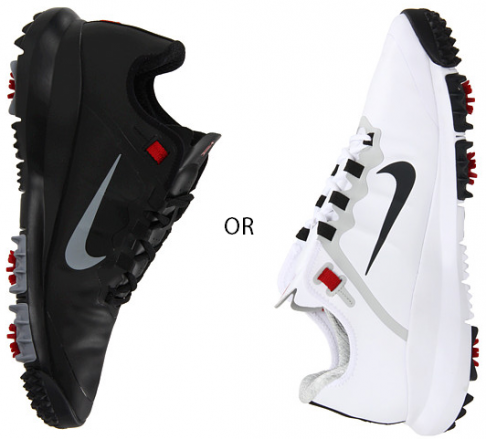Bowl season is finally over for college football and now
it’s time to dig into the data and see who won. We’ll start with the obvious.
Alabama won. Alabama could scarcely have won by more. Moving to the
conference-level we can take a quick look at the records before getting some
more accurate answers.
The Conferences
|
W
|
L
|
W%
|
|
CUSA
|
4
|
1
|
0.800
|
|
ACC
|
4
|
2
|
0.667
|
|
SEC
|
6
|
3
|
0.667
|
|
WAC
|
2
|
1
|
0.667
|
|
BigEast
|
3
|
2
|
0.600
|
|
Pac12
|
4
|
4
|
0.500
|
|
SunBelt
|
2
|
2
|
0.500
|
|
Big12
|
4
|
5
|
0.444
|
|
Ind
|
1
|
2
|
0.333
|
|
B1G
|
2
|
5
|
0.286
|
|
MAC
|
2
|
5
|
0.286
|
|
MWC
|
1
|
3
|
0.250
|
Conference Records (2012-13 Bowls)
Since each team also had a Sagarin predictor ranking (the
ranking predicts the score differential between any two teams), we can also
look at what conferences were supposed to do, then compare that record with what actually happened.
|
W
|
L
|
W%
|
Fav
|
Und
|
eW%
|
Dif.
|
|
ACC
|
4
|
2
|
0.667
|
1
|
5
|
0.167
|
0.500
|
|
CUSA
|
4
|
1
|
0.800
|
2
|
3
|
0.400
|
0.400
|
|
MAC
|
2
|
5
|
0.286
|
0
|
7
|
0.000
|
0.286
|
|
BigEast
|
3
|
2
|
0.600
|
2
|
3
|
0.400
|
0.200
|
|
B1G
|
2
|
5
|
0.286
|
1
|
6
|
0.143
|
0.143
|
|
Ind
|
1
|
2
|
0.333
|
1
|
2
|
0.333
|
0.000
|
|
MWC
|
1
|
3
|
0.250
|
1
|
3
|
0.250
|
0.000
|
|
SEC
|
6
|
3
|
0.667
|
8
|
1
|
0.889
|
-0.222
|
|
Big12
|
4
|
5
|
0.444
|
6
|
3
|
0.667
|
-0.222
|
|
Pac12
|
4
|
4
|
0.500
|
6
|
2
|
0.750
|
-0.250
|
|
WAC
|
2
|
1
|
0.667
|
3
|
0
|
1.000
|
-0.333
|
|
SunBelt
|
2
|
2
|
0.500
|
4
|
0
|
1.000
|
-0.500
|
Conference Records plus Sagarin Predictions (2012-13
Bowls)
The story changes a bit here. The ACC and CUSA are still
the class of the bowl season, but the SEC drops down to the bottom half on
account of their teams’ lofty rankings from the regular season. The WAC and Sun
Belt actually had pretty good bowl seasons in overall record – until you notice
that their teams were expected to win every game.
Why use this method rather than their record? As I complained
wrote about in my recent
post on the Big Ten, teams are not necessarily selected to ensure
competitive games. Even when bowls want a certain matchup to generate interest,
conferences may step in as they did when the Capital One bowl wanted
Texas A&M vs. Northwestern (they got conference championship game losers
Georgia and Nebraska).
Why not use Vegas lines? Vegas lines, while primarily
based on score expectation, may also incorporate information about how the
public is betting to make sure that not all of the money comes in on one side.
As an example, if BYU is playing UNLV in a bowl and the actual game estimate
has BYU favored by 6, the line may shift toward UNLV (maybe BYU by 3 or 4) because
BYU’s alumni base is unlikely to partake in the action (see here) while
UNLV’s is close enough and numerous enough to overwhelm unbiased bettors.
Why not adjust the Sagarin lines to account for home
field advantage? Because that doesn’t improve them. I took a look at the
adjustment suggested by Sagarin – 3 points for the home team – with a further
1.5 points for schools that were “near” rather than home (think Texas Tech
playing in Houston). The raw lines had an average error of 0.4 points. The
adjusted lines had an average error of 1.0 points. Isolating just the Home and
Near teams showed mixed results: Home results were significantly worse (1.1 raw
and 4.1 adjusted) while Near were better (6.0 raw and 4.5 adjusted).
The Teams
I know, I know, I already said that Alabama won
everything. For fun though, let’s take a look through the rest of the teams and
see who showed up for their games and who came out flat. Since one team’s
underperformance is another’s outperformance, this being a zero sum game, we’ll
look at it by bowl game.
 |
| Performance of 2012-13 bowl winners relative to Sagarin predictions |
This graph includes all of the winners in the 2012-13
bowl season. As elsewhere in this post, the Outperformance/Underperformance
represents the actual margin of victory minus the projected margin of victory. Five
of the winners underperformed with Texas Tech “leading” the way by winning
despite underperforming by 12 points. Those schools that had head coaching
changes underperformed by 6.6 points.
Alabama’s performance, the 9th highest outperformance, is
remarkable because of the competition. As the one bowl that is supposed to
match up relatively even teams – numbers 1 and 2 in the BCS – the National
Championship Game should not see this kind of outperformance. Regardless of
what should have happened, Alabama came out hot and Notre Dame had no answer
throughout. I have a feeling there is a decent chance I’ll be writing this
again next year with only one of those schools changed.

